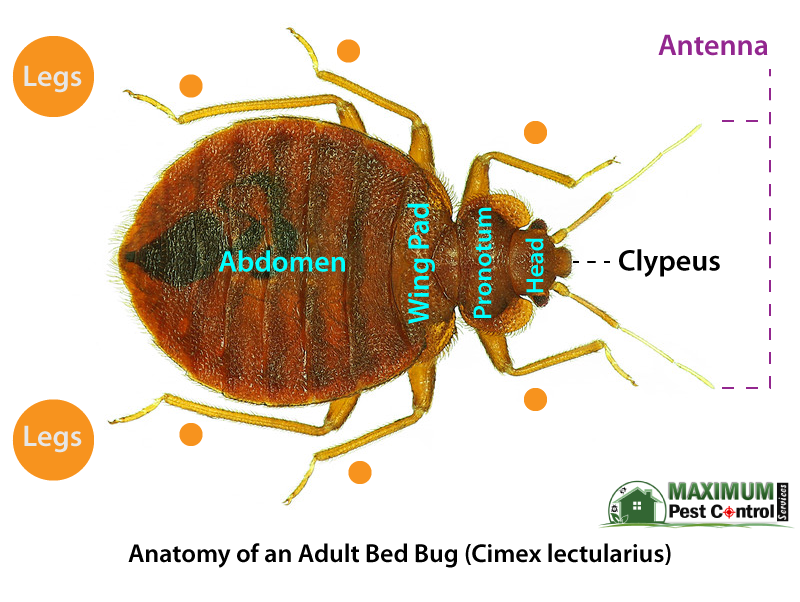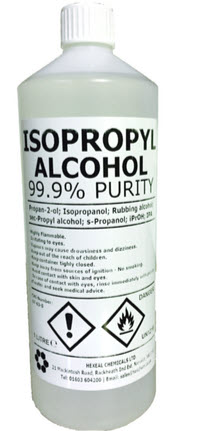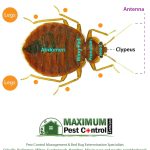
The Truth About Rubbing Alcohol And Bed Bugs Infestations
Bed bugs have managed to develop a reputation as notorious home insects that disrupt sleeping comfort with their itching body bites. Because they have increasingly developed resistance to conventionally used pesticides, many are on the lookout for alternative bed bug control methods. One such alternative attracting serious attention is the use of rubbing alcohol. What is the effectiveness of rubbing alcohol in the fight against them? In this informative blog, we will discuss the efficiency of rubbing alcohol in combating bed bugs and some guidelines on best practices for application.
Understanding Bed Bugs
Before details about rubbing alcohol, it is important to know what they are and why they are so difficult to eliminate most of the time. bed bugs cimex lectularius are tiny insects that are reddish-brown in colour and feed on the blood of both humans and sometimes animals. The noxious insects are nocturnal and spend most of their day times hidden in cracks or other small out of reach spaces. They can be found not only within mattresses but also in furniture and even behind wall outlets and under baseboards hiding from us.
They are a formidable pest owing to their resilience to common treatments and the ability to reproduce fast. A single female lays hundreds of eggs which-if not treated correctly, results in a speedy infestation. Traditional treatments have long included insecticides, but alternative methods include the use of rubbing alcohol.
Mechanism of Rubbing Alcohol
The common name for isopropyl alcohol is rubbing alcohol, a widely used disinfectant in most households for dealing with bacteria, viruses, and fungi. The important question is: can rubbing alcohol eliminate the bed bugs?
Iso-propyl alcohol acts by denaturing proteins and dissolving lipids within microbial cell membranes. When make contact with rubbing alcohol, their cell membranes are disrupted, and they subsequently die. It also dehydrates the bugs and their eggs.
However, this only works if the rubbing alcohol comes into contact. It will kill only those bugs that it actually touches and will never reach other bugs well hidden in cracks or inside furniture. The performance of the rubbing alcohol also depends on its concentration; the higher the concentration, the better.
Pros and Cons of Rubbing Alcohol for Bed Bugs
Pros
Accessibility and Cost: Rubbing alcohol is easy to access and considerably cheaper than some commercial treatments against these sucking blood bugs. It’s usually available in most grocery stores and pharmacies.
Immediate Action: Bed bugs, upon contact with rubbing alcohol, will die, thus offering instant visible relief from the pest.
Properties of Disinfection: Besides killing these blood sucking bugs, rubbing alcohol might further disinfect the surface to protect against secondary infections and other pests.
Cons
- Poor Penetration: Rubbing alcohol does not penetrate deep into cracks, crevices, or behind walls where they can hide. Therefore, relying on it solely as a treatment method is inadequate.
- 2. Evaporation: Isopropyl alcohol evaporates rapidly, hence limiting the duration of its effectiveness. This may suggest that for total eradication, continuous or repeated applications may be needed.
- Flammability: Rubbing alcohol is highly flammable; application must therefore be done with caution to avoid possible fire hazards.
- Possible Damage: If not used properly, it has the potential to damage certain materials and finishes, including some on wood furniture and electronics.
Comparison to Other Bed Bug Treatments
In using rubbing alcohol as a treatment for bed bugs, it is beneficial to compare them with other treatments. Here is how it compares:
Chemical Insecticides
The insecticides that are most commonly used against bed bugs are chemicals in the pyrethroids and neonicotinoids classes. When properly applied, these materials can be quite effective. They diffuse well into cracks and crevices, where bed bugs hide. Over the years, however, they have developed resistance to most such chemicals, and treatments have grown less reliable. Heat Treatment
It involves raising the temperature in an area to be infested with bed bugs to a degree which is lethal for them. Quite an effective treatment, it reaches all areas where the bed bugs hide. It is, however quite expensive and requires equipment that is quite specialized. As compared to rubbing alcohol, it is more comprehensive.
DE is a naturally occurring powder that works by dehydrating on contact. It’s another non-toxic option-most of the options. It works best when in coordination with other treatments. Unlike with rubbing alcohol, it has some residual action in that it continues to kill them over time.
How to Use Rubbing Alcohol for Bed Bugs
If you are going to use rubbing alcohol in your bed bug treatment, then you need to apply it correctly. Here are some tips:
- Preparation: The area you wish to apply the substance on must be clean and free from clutter. Remove all bedding and vacuum thoroughly to reduce the number of bed bugs and eggs present.
- Application: Fill a spray bottle with the rubbing alcohol so that it is easy to apply. Spray directly onto visible bed bugs and around places where bed bugs are most likely to be hiding. Pay great attention to seams of mattresses, cracks in furniture, and baseboards.
- Safety Precautions: Let the area be well-ventilated so you do not inhale the fumes. Highly flammable, the rubbing alcohol should be kept away from open flames and sources of heat.
- Follow-up: Because rubbing alcohol will only kill upon contact, the efficiency of its use will always have to be in addition to other methods, such as heat treatment or diatomaceous earth, for better bug eradication. In this case, repeated applications could be necessary to handle newly developed bugs.
Conclusion
While rubbing alcohol can be an effective tool in killing upon contact, it is not a comprehensive solution for eliminating the infestation. Its limited reach, rapid evaporation, and possibility of causing an injury make it not so good as an independent treatment.
For maximum effect, rubbing alcohol should be used together with other methods of bed bug treatment. By incorporating other strategies into a comprehensive treatment plan, one can systematically manage and hopefully eliminate them.
In case of an infestation in very large numbers, you might want to consult a pest control professional. Exterminators could provide a far stronger treatment and eradicate all bed bugs and eggs. Are bed bugs invading your property? Connect with Maximum Team today (905) 582-5502





